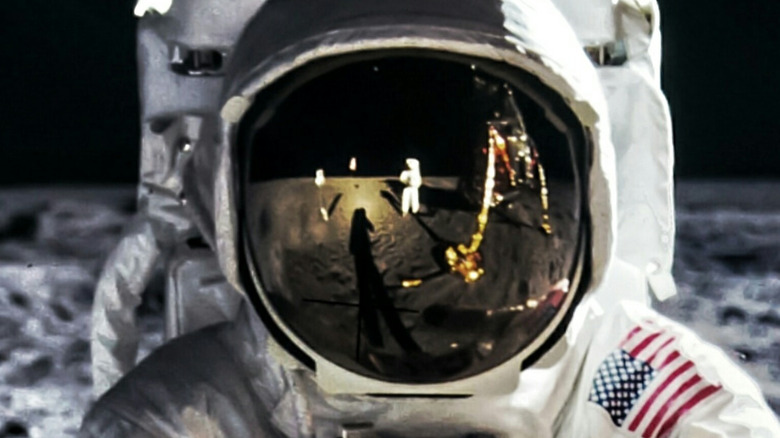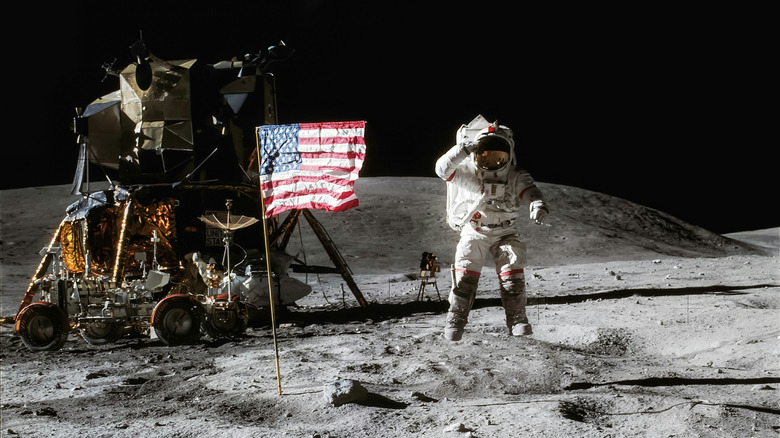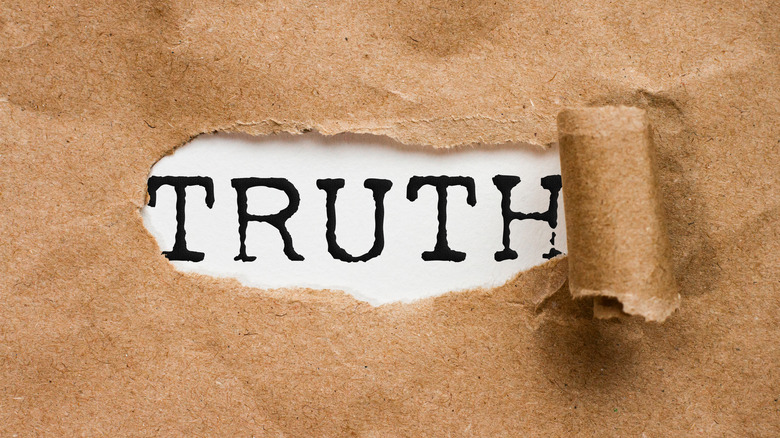Why The 'No Stars' Moon Landing Conspiracy Makes No Sense
On July 20, 1969, Neil Armstrong stepped out of Apollo 11 onto the surface of a celestial body that was not Earth, becoming the first human from Earth to ever do so (via History). He was quickly followed by his fellow astronaut, Edwin "Buzz" Aldrin. It was an extraordinary achievement of science and national will. Just eight years earlier, President John F. Kennedy addressed a joint session of Congress to make the case for America landing a man on the moon.
And ever since that historic moment, people all over the world have been looking for evidence that suggests that the entire event was faked — that humans have never been to the moon, and that one of humanity's greatest accomplishments is all a fraud. As the Royal Museums Greenwich explains, most of these conspiracies simply don't have any reason for them, such as the "no stars" moon landing conspiracy.
In the photographs and film that were taken by the crew on board Apollo 11, there appears to be a dark sky with no stars whatsoever, much different from what you would expect from a photograph on the moon's surface. This has led to an onslaught of theories that NASA simply just faked the moon landing altogether and that the evidence is right in front of our eyes. Scientists and photographers alike have a different explanation, and it all has to do with the camera settings.
Adjusting the camera settings
When taking a photo here on Earth, adjusting the lighting is always important to get the perfect shot, and it turns out it's the same on the moon. If you take a picture on Earth in direct sunlight, or in a room with bright lights, you aren't going to be able to see anything except a blur. But if you alter the camera settings to let in less light, and then increase the shutter speed to take the picture faster, you'll have a clearer image of what you are actually photographing. In dark spaces, you would do the opposite: You would adjust the lens to capture as much light as possible, and you'd slow the shutter speed (via Discovery).
On the moon, the process is a little different, however. Even though the sky was black when the pictures were taken, it doesn't mean it was nighttime. The moon doesn't have an atmosphere, and therefore even though the sun is still lighting up the lunar surface, there is no blue sky to be seen. The surface of the moon was "incredibly bright," says Discovery. Therefore, when taking a picture, the astronauts would have to make the shutter speed fast and narrow the camera's aperture to get a clear photo. By preventing loads of light from coming in and blurring the shots, the stars were omitted simply due to their light not being captured, according to Discovery.
Finding the truth
Due to the camera settings' omission of the stars in the dark sky, the Apollo 11 crew was able to capture the more important things, according to Astronomy. These pictures of the lunar surface fascinated audiences back on planet Earth and inspired many of the younger generations of the time to want to be astronauts themselves. But this also isn't the only conspiracy theory that convinces people that the moon landing was fake.
Skeptics have a slew of other theories of why they believe the moon landing was a hoax, such as claiming the crew on Apollo 11 wouldn't have been able to survive Earth's radiation field, the "waving flag" theory, or the non-parallel shadows conspiracy theory, all of which have been debunked, according to Royal Museums Greenwich. It may be a good trait to always be skeptical, and to make sure something sounds logical before believing it right away, but just as important as being a skeptic is the ability to research and examine evidence to validate the truth, not a viewpoint.


